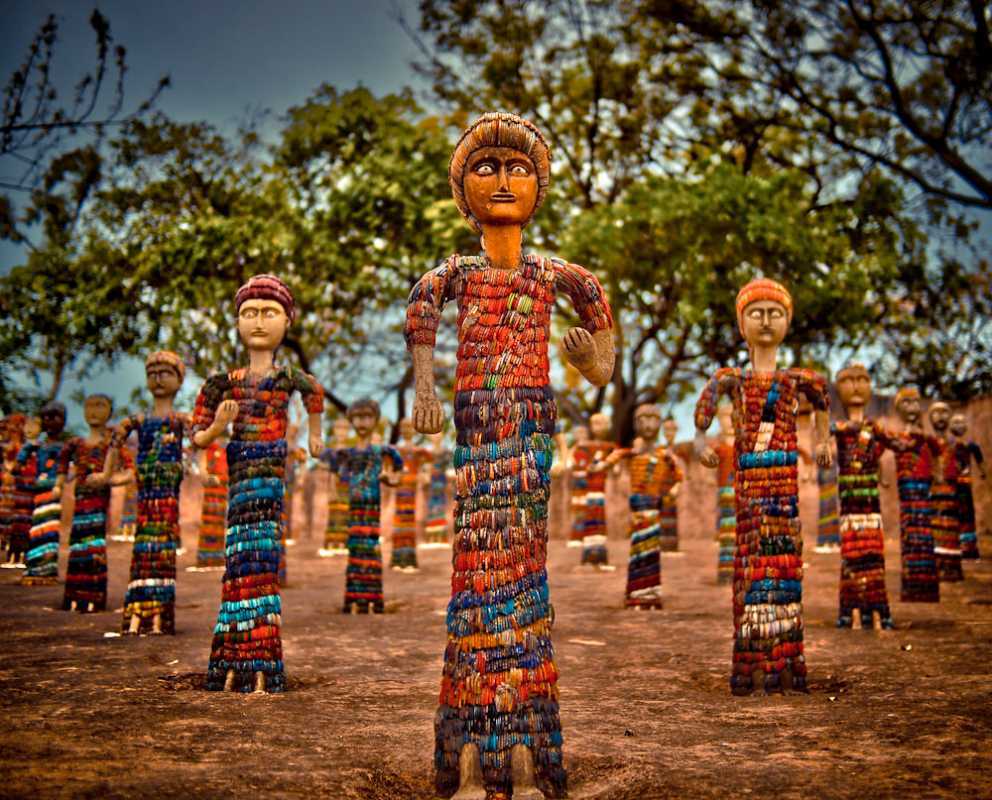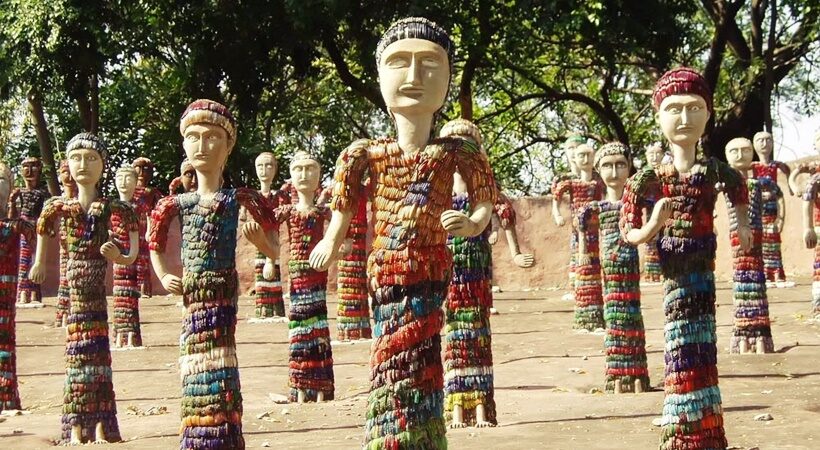In 1957, Nek Chand, a Road Inspector in the Engineering Department of Chandigarh Capital Project, began collecting waste materials lying behind a government building in Chandigarh, north India. The first seven years were spent collecting natural materials, and urban and industrial waste. Gradually his collection mounted to a staggering twenty thousand rock forms of amazing beauty. These were deposited around a hut, which he had built for his work and contemplation. He built the Rock Garden from this improvised hut, located by the side of a stream. The Rock garden eventually came to be spread over an area of 40 acres (16 ha) and is completely built from industrial, home waste and discarded items.
Since the site where Rock Garden stands today was also used as a dumping ground for urban and industrial waste, Nek Chand picked up pieces of foundry lime-kiln and metal workshop wastes and also shaped them with his creative genius, resembling human, animal or abstract forms. These pieces have been innovatively displayed as sculptures in the garden.

Also, on display are shapes sculptured by using a variety of discarded materials such as frames, mudguards, forks, handlebars, metal wires, play marbles, crowns of soft drink bottles, porcelain, auto parts, broken bangles, pieces of slate, burnt bricks and even human hair recovered from barbers’ shop.
Nek Chand salvaged a variety of debris from demolished structures, waste from lime kilns, discarded street lights, electrical fittings, broken sanitary ware, crockery etc. Thus demonstrating how urban and industrial waste can be fruitfully recycled and used in a creative pursuit.
It is also to be noted that the work was illegal and would have been shut down had it been discovered. But In 1973, the park got discovered, accidentally. After a long process, the park was recognized for its immense artistic value by Indian officials and in 1976 the park was inaugurated as a public space. Nek Chand was given a salary, a title of Sub-Divisional Engineer, and 50 labourers so that he could work full-time. From that time, Chand gave up government work and focused on the garden. Chand and a team of 50 men began heavy work in the mid-1970s and gave the garden a new life force. Sculptures of groups of people, all comprised of recycled materials, took shape around the garden.

Hundreds of statues dance across the mosaic tiles of the garden, inviting visitors to join in the merriment of Chand’s work. Wild gangs of elephants, monkeys and other animal sculptures also populate the garden, speckling the interior with life. Along with the jubilant sculptures, a series of waterfalls designed by Chand provides a lush atmosphere to the garden.
One of the largest waterfalls descends from a pavilion in the garden, where visitors can walk directly up to the splashing rock wall. The garden is a living and colourful tribute to art and ingenuity and a wholly Indian exhibition. It is detailed down to the mosaic tiling that visitors walk across in the garden. Located in Sector 1 of Chandigarh, the garden has received worldwide acclaim and is now a visual delight for visitors.



















